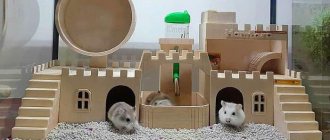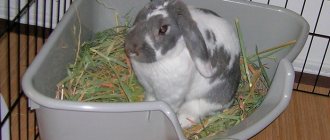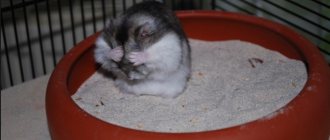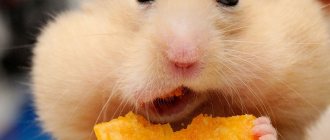We bet you will have a hard time finding a person in your circle who adores animals and, at the first opportunity, would agree to live in the same apartment with a hyena or puma? But every second person will be happy to share living space with a hamster. But it is unlikely that anyone will begin to count before buying an animal how much money he will have to spend per year from his budget on the same hamster. The editors of Sibdepo decided to do this for you and calculate how much money our pets “eat up”. We realized with horror that if we put into the piggy bank the same amount that we have to spend on food and care for the animal, within a year we can go on vacation for at least a couple of days to Sheregesh. No, no, we love animals very much, this is just a dry fact.
Let's agree in advance - in this and subsequent articles we will describe the expenses necessary for the pet to live in optimal conditions and spend all the years of its animal life with dignity. So it will be significantly more expensive than many thought.
A hamster is an ideal pet: small, not too noisy, eats little, not at all vindictive and takes up little space in the apartment. By the way, he won’t get in the way either, he always sits in a cage. The main thing is not to forget to feed him and clean up his home, then you will become ideal neighbors. And he doesn’t require additional attention - he knows how to entertain himself very well. Running for many hours in a special wheel replaces his cute hugs with his owner. By the way, he doesn’t need an individual of the opposite sex either, unless, of course, you want to become the owner of a hamster farm. And you can buy a hamster at any pet store in Kuzbass. The minimum price for one two-week-old rodent is 150 rubles.
Three-liter jar Vs cage
“I think I want a hamster,” you thought, and began to “Google” the address of the pet store closest to your home. But remember, you still have to fork out the cash. The hamster itself is worth a penny, but don’t be fooled – the pet store intends to (and will) charge you an immeasurably large sum.
“Why does a hamster need a cage when I can arrange a home for him myself, using a shoebox or a three-liter jar for these purposes, like in the good old days,” you will think, and you will be completely wrong. A hamster needs space. Without movement, the rodent will quickly wither and die. They already have a ridiculous lifespan - on average about two years - and in such conditions the animal will not last even a quarter of this lifespan. In the wild, it covers long distances per day and is constantly on the move. Long gone are those cruel times when it was considered the norm to keep a hamster in a jar. The Djungarian hamster will have the worst time in such a home. This is the analogue of a husky in the rodent world - if he doesn’t sleep, he runs around all the time. And other hamsters suffer without space. In addition, forcing an animal to breathe through a small hole in the ceiling is pure sadism. If it's hot at home, he'll just die very quickly. For the same reason, an aquarium is not suitable - it’s stuffy. In general, just a cage. But not the simplest one will do.
In any pet store you can find a cage for 700-800 rubles. She looks very pretty. But we reject this option - it’s too small. Remember what we wrote about the need to run. 45 cm in length and 30 in width is the minimum. It’s not difficult to find one and it will cost from 1,500 rubles to infinity: there are huge, half a room, hamster palaces with 4-5 levels, labyrinths and stairs.
The cage comes with a house, but it is plastic, but a wooden one is needed so that the stupid animal does not eat up the plastic. At least another 300 rubles (although those whose hands grow out of place can save).
There will be a wheel in the cage, which is usually quite suitable (three times the size of a hamster), but this is not enough. We need at least one more “fun”. The ideal option is a hanging swing-sleeve (from 400 rubles).
Hanging sippy cup (so that there is no dirt in the cage) - from 100 rubles.
A walking ball is an indispensable item for your hamster's safety while cleaning the cage. Or just for the sake of general development and diversity. Price – 300 rubles and above.
This is the necessary minimum purchased with the hamster for its entire life. Now let’s move on to the “consumables”.
see also
Reduced ambient temperature
If the animal was healthy and vigorous, and suddenly you noticed that the hamster was lying down and not moving, then first of all you need to assess the temperature. When the air temperature is below 20⁰C for a long time, the rodent can hibernate.
Another reason for deep sleep is a strong reduction in the amount of food - in this case, the animal is starving. Lack of lighting also leads to longer sleep.
If this is really hibernation, then the animal’s body is soft and warm (but lower than usual). Breathing and heartbeat are slow. Therefore, you need to observe the animal for five minutes. To assess the heartbeat, place the thumb and index finger on either side of the hamster's chest under the paws. During hibernation, only four beats can be recorded in one minute.
Nutrition
The hamster, of course, does not eat much, and a package of special food will last you for a month. Don’t go cheap, cereals alone (90 rubles per package) are not enough for him - buy food that also contains nuts and dried fruits (230-250 rubles in Kemerovo pet stores).
In any pet store, in addition to regular food, you can buy hamster treats - cookies or various kinds of bars. But this is not necessary - “live” vitamins are no worse. We don’t include this in our expenses: after all, we buy fruits and vegetables for ourselves, which means that the hamster will also get it – how much does he need?
see also
Recommendations
If you decide to purchase a terrarium or aquarium for your pet, you should definitely take into account some nuances:
- Choose a design according to the size of your pet.
- It is better if it is a large-sized housing in which you can install additional attributes - a wheel, a nesting house, a ladder, a drinking bowl and feeders.
- Choose a model made of ordinary glass. It is durable and highly decorative for several years.
Article on the topic: Molting in red-eared turtles: the shell peels off, the skin on the neck and paws peels off
Care
The most important thing here is the cage filler, which needs to be changed once a week. With disgust we throw aside the torn paper and cotton wool. The first is the dirt and stench in the cage, and the second is generally slow and painful torture. Thin, almost imperceptible fibers wrap around the animal’s paws, disrupting blood circulation. And it is impossible to notice and remove them. And the same thing happens with the internal organs, we remember: this pet strives to eat everything it sees.
Fortunately, modern pet stores offer two excellent options: corn husk litter (from 700 rubles, a package is enough for 3-4 shifts) and hay (from 100 rubles, a package is enough for 3-4 shifts). Both options are generally good. But corn is “noisy”; when your pet goes out for a walk at night, even the neighbors will hear it. But you don’t need to change it more often and you can burrow into it just fine. Hay needs to be changed at least once a week. But it is much cheaper and, what is important, you can build a cozy nest in it.
As for care, you should not wash your rodent with water. Hamsters wash themselves in the sand. In a special, very small one. Just install a bath in the cage and get aesthetic pleasure - they have a lot of fun bathing. The sand needs to be changed every time the cages are cleaned. And ideally – once every two days. A bottle of high-quality sand costs at least 280 rubles.
see also
What you need to know about guinea pigs
Pigs are easy to tame and do not require much care. With good care from the owner, the animal can live on average 5 years.
The period of activity in guinea pigs occurs during the day, decreasing in the evening. Unlike hamsters, they will sleep peacefully at night without disturbing the owner with their vital activities.
Character and training
Guinea pigs are distinguished by their friendliness, sociability, and calm nature. They can easily live next to cats and dogs, spending time in the same company without quarrels or discontent. They love to be pampered in the hands of their owner, to whom they feel great affection, exposing their fur coat for scratching. Noticing the presence of the owner, these animals begin to whistle loudly, expressing their good feelings and joy.
Pigs are completely devoid of aggression: they will never attack or even defend themselves, preferring to quietly retreat
If desired, the animals can be trained to perform a variety of tricks, since they train easily and successfully, which attracts the attention of children. A trained pig can follow its owner everywhere, stand on its hind legs or roll a small ball with its muzzle.
When answering the question of which rodent is smarter, the advantage remains with the pig.
Care
A 6-year-old child can take care of the animal every day, but if you get an animal for a preschooler, an adult will need to take care of the creature. You will also have to monitor the baby so that, out of ignorance, he does not harm the pet, otherwise the injured pig may lose confidence in the owner.
Cell
A guinea pig needs a spacious cage in which it can lead an active lifestyle, moving freely inside the apartment. The condition is mandatory, since inactivity will lead to obesity and will not allow the animal’s legs to become strong.
The cage is located in a quiet place, protected from drafts and coolness, so that the pig does not catch a cold. There should be no wires nearby, since the nature of the rodent will certainly manifest itself in the ability to chew through solid objects
It is important to provide the cage with a special house where the pig can sleep or hide
Essential plaid accessories
It is better to use regular sawdust as bedding, because pigs are big fans of burrowing, and the material should be harmless. You need to clean the cage periodically, as the sawdust will smell unpleasant. It is necessary that the cage has a drinking bowl with clean water and a feeder filled with food, fresh grass or hay. To help your pig grind down its teeth and claws, offer it a mineral stone or a hard piece of tree bark.
A running wheel should become a mandatory attribute of the cage, giving way to a mirror and ladders. Every day, the guinea pig must be let out for walks around the house, remembering to keep an eye on the animal, as it can end up in a hard-to-reach place and get stuck.
Nutrition
Guinea pigs are not picky eaters. They enjoy eating a variety of grains, herbs, vegetables and fruits. For herbs, they prefer lettuce leaves, parsley and dill, fresh dandelion leaves and spinach. Among fruits and vegetables, they can be fed fresh cucumbers, sweet peppers and carrots, apples, peaches and strawberries. Unlike hamsters, pigs cannot be fed meat, potatoes and cheese.
A distinctive feature of a pig is that it eats its own feces, which contains a vitamin that is beneficial for its body. If an animal begins to eat uncleaned excrement in a timely manner, a very young child can follow the animal’s lead, planning to independently evaluate the pig’s “delicacy.”
Pros of a guinea pig
About the benefits of a guinea pig:
- they are easy to care for;
- you can do training;
- complete absence of aggression;
- they love to be held;
- get along with other pets.
Another compelling argument for getting pigs is the opportunity to buy a hairless animal of the “Skinny” breed if the child is allergic to wool. When choosing a guinea pig as a pet, you need to remember to regularly clean the cage to avoid unpleasant odors in the house.
Treatment
You can relax here. You won't have to vaccinate your hamster; you'll save your hard-earned money on vaccinations and veterinarian fees. Firstly, these rodents rarely get rabies. Secondly, vaccinating an animal that lives only two or three years is simply not profitable and pointless. Virus-resistant antibodies simply do not have time to be developed in the hamster’s body during its short life.
But you cannot do without treatment completely. The rodent may develop parasites - worms and fleas. To make your animal feel comfortable, you will have to buy a special powder and treat it. This powder costs about 100 rubles, and it won’t last a hamster’s entire life.
Of course, rodents sometimes get more seriously ill. But in each specific case, you need to consult a veterinarian, who will prescribe the appropriate treatment, the cost of which can be found out directly at the veterinary clinic.
Sanitary difficulties
We especially highlighted one of the disadvantages of the aquarium. The fact is that a large glass house is extremely difficult to clean. After all, usually the terrarium consists entirely of glass, and is not installed on a glass tray. When washing, it is easy to cut yourself or break the hamster's house.
And you will have to wash it more often than a regular cage with a wire frame. In addition, the lack of free air circulation allows not only dangerous bacteria, but also mold to actively multiply. It is very difficult to remove it from joints, and sealants cannot provide a 100 percent guarantee that it will not appear. To disinfect the aquarium as much as possible, you will have to use aggressive agents, and many of them are toxic to hamsters.
A hamster can be kept in wide aquariums, but the animal will be much more comfortable in a cage. A house made of twigs is more consistent with hygienic standards for small rodents. But if you have an empty terrarium, you can easily adapt it into a room with attractions for temporarily keeping a hamster.
Total
As Vladimir Mashkov , “let’s be like a grandmother”: on the day you buy a hamster you will have to spend at least 2,750 rubles. Its annual maintenance will cost you 17,140 rubles with corn as a filler, or 9,940 with hay. And that's the minimum. Now let's remember how much the hamster itself costs. Well, doesn’t he deserve to be called a “budget eater”? Another thing is that the costs, in our opinion, are worth it. The Djungarian hamster Pesha, who posed for this article, belongs to one of our editorial staff. And this employee assures that he does not regret a single penny spent, because in return the gray pet gives his family a sea of positive emotions.
What reduces life expectancy
Bathing
Bathing is contraindicated for rodents, since the animal independently removes dead particles and large contaminants. You should only bathe your hamster in water if the dirt from its fur cannot be cleaned even with a special brush.
Bathing too often can cause extreme stress in your pet. This will lead to a reduction in life expectancy.
Stress
Stress is dangerous for hamsters because constant physical and mental stress can lead to exhaustion of the body. Under the influence of stress, the hamster will become lethargic and inactive, and its appetite will worsen. Stressful situations for hamsters are:
- The proximity of a single hamster to hamsters of another species;
- the solitary existence of a hamster that gets along well only in a group;
- frequent stay in the arms of the owner;
- too rare stay in the arms of the owner;
- bathing;
- loud noise and too bright light in the room.
Diseases
Infectious diseases in hamsters can occur after contact with an infected animal and its waste products or food (water). The symptoms of infectious diseases are similar to each other, so only a veterinarian can make a final diagnosis. You should contact the clinic if your hamster exhibits the following symptoms:
- The affectionate and calm animal begins to show aggression and rush around the cage.
- The animal begins to tremble.
- Often lies with eyes closed even while awake.
- Dry or loose stools.
- Breathing becomes frequent, labored or difficult.
- The fur becomes damp and falls out more than usual.
- Discharge from the nose or eyes.
| Disease | Symptoms |
| Tuberculosis | · Lethargy; · inactivity; · lack of appetite; · cough, shortness of breath; increased body temperature; · loose stools; · hair loss. |
| Tularemia | The disease is asymptomatic, sometimes the animal can become more aggressive. |
| Listeriosis | The main signs are loss of balance and disorientation in space. When an animal moves quickly across a surface, it may suddenly lose its balance and become unconscious for a few seconds. |
| Infectious pneumonia | · Loss of appetite; increased body temperature; · cloudiness or blue tint of the mucous membranes; · rapid breathing; · nasal discharge; · conjunctivitis; · attacks of acute cough. |
| Paralysis | · Minor trembling; · refusal to eat; · inability to stand on your paws for a long time; · urinary incontinence. |
| Salmonellosis | · Immobility; · loss of appetite; · apathy; · enlargement of the abdominal cavity; · loose stools; · sudden change in body temperature. |
| Plague | · Apathetic state; · loss of appetite; · wool standing on end; · blue tint of mucous membranes. |
Diversity of life of hamsters at home
The hamster takes root quite easily at home. Does not require much attention and care. But this is not the animal that always walks freely throughout your home. A hamster needs a special aquarium or cage. And if you don’t provide him with this, then he will do it himself while walking around the apartment. But you won’t be very happy when the hamster gnaws a place to live in the closet, for example.
As a rule, a Syrian hamster is chosen for the home. Its life at home is not long, only 2-2.5 years. If you don’t make mistakes and properly care for it, you can extend it by almost half (up to 3.5 years). The lifespan of a hamster directly depends on you and your care. Your pet needs to be fed correctly and on time. Choose the right diet. Of course, the products must be of high quality; a hamster is not a mouse. If possible, he should also give your attention.
Prevention
To avoid escaping, both new and repeated, you need to:
- Upgrade the cage - if there are broken or loose mechanisms or bars, they need to be repaired; inspect the cage for “weak” places - too wide rods or holes in the plastic tray; if there are any, they need to be replaced. The cage must be inspected from all sides; holes may not be noticeable at first glance.
- If the rodent has learned to open doors, add an iron lock or a paper clip for security.
- Perhaps your pet's escape is a necessary measure. It is necessary to remove possible sources of stress: nearby music speakers; accessibility of the cage for other pets; heating appliances, etc.
- Perhaps the animal is simply bored: diversify its leisure time with new toys.
- Cardboard and plastic boxes are not suitable for keeping rodents - they easily chew them off;
- For walking, it is advisable to purchase a special walking ball - this way the animal will not only not get lost, but also not get hurt.
It’s easier to take care of possible risks than to search for and catch the fugitive later. Keep an eye on your pets!
Psychology of the Hamster from Pulse, which prevents you from making money.
The main feature of Pulse is that you can see what and who bought it. What promotions and at what prices. This is a trap for the novice investor. If the author publishes useful investment advice and analyzes companies, you begin to trust him. If you trust anyone's advice, you risk losing your money.
Let's consider the situation. One of the pulse authors did a detailed fundamental analysis of company X and advised buying. You go to his profile and look - yeah, he bought it. The author is smarter than me, since he bought it, it means it’s a profitable investment and you can make money. I need to buy it too. This is how a typical Hamster acts. And at the same time he makes several mistakes at once, which often lead to losses. And that's why:
- You believe someone you don’t know and for reasons you don’t understand. You don’t know him personally and you can only guess about his knowledge
- You are buying at a higher price. The author of the recommendation himself bought it first. Those who listened to him are already working for him. Each purchase of the desired stock moves the stock price up. Thousands more people bought this stock before you bought it. It's unlikely that you were the first. This means your income, under equal conditions, will be lower, because... the purchase price is higher.
- Once you buy a stock based on advice or information, you become dependent on the author of that advice. So you bought, and when to sell? At what price and under what events, what stop loss to set. You do not know. As a result, you may end up with a big loss if the stock goes down and you don’t sell it on time
- You don't know about the volume. How many people bought - one share to try or a thousand? You don't know how much to buy or when to average.
How to choose hamster litter and nesting material?
Avoid cedar and pine chips for your pet's bedding; the smell can irritate the respiratory system of hamsters. Aspen is a safer option if you prefer to use wood core, but many people prefer paper or cellulose cores.
Hamsters love a cozy nest to sleep in; Cotton nesting materials found in pet stores are unnecessary and can cause problems if the hamster eats them or gets their paws tangled.
Shredded toilet paper or facial tissues make excellent nesting materials and are also economical.
The litter can be cleaned out and replaced during weekly cage cleaning.
Prevention of escapes
If your hamster often runs away, you need to think about the reasons for this phenomenon. To stop the escapes, follow these recommendations:
- Strengthen the cage. You should patch holes that animals have gnawed and check the reliability of the door. By the way, the door can be kept closed using a clothespin.
- Create a calm environment for your pet. If there is a stereo system, TV and other noisy devices next to the cage, then the Homa runs away from the house precisely because of them. Move the rodent's house to a place where it cannot be reached by loud noises or other pets.
- Don't break your daily routine. If you see that the fluffy is not in the mood for communication and wants to sleep, do not force him to play, otherwise he will try to run away.
- Do not leave the animal alone outside the cage. Follow every step so you don’t have to search and catch later.
These basic tips will help prevent your hamster from escaping and will make his and your life calm and comfortable.
Remember: small rodents rarely escape from a good life. If the hamster runs away, your task is to double your vigilance, quickly catch your pet, check the health of the cage and make sure that the animal lives in peace.











